Harrison Schmitt is a former astronaut and U.S. Senator. He was the 11th person to walk on the Moon. 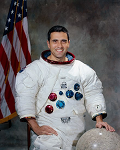
He was born on July 3, 1935, in Santa Rita, N.M. He grew up in Silver City and graduated from Western High School in 1953. Continuing his studies at the California Institute of Technology, he graduated from there with a bachelor of science degree in geology in 1957. After a year studying geology at the University of Oslo (in Norway), he returned to the U.S. and went to Harvard University, graduating with a PhD in geology in 1964. Schmitt was one of the first scientist-astronauts named by NASA in 1965. He designed field procedures for Apollo crews at the U.S. Geological Survey Astrogeology Center, in Flagstaff, Ariz., and also trained as a jet pilot. In 1970, Schmitt, Dick Gordon, and Vance Brand were named to be the backup crew of Apollo 15. According to the established rotation, that would have made them the primary crew for Apollo 18. That mission never happened because of funding cuts. Many within the scientific community felt strongly that a professional geologist should go to the Moon that they lobbied NASA to include Schmitt in the crew of Apollo 17. After Launch date was Dec. 7, 1972. The trip to the Moon was uneventful. The Lunar Module landed in the Taurus-Littrow valley, somewhere no previous crew had been. Cernan was the first to set foot on the surface; Schmitt followed. 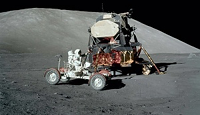
As before, the lunar surface crew took samples of lunar dust and rocks. They also set up scientific instruments. One of the most high-profile instruments was the Traverse Gravimeter Experiment (TGE). The astronauts took gravity measurements at their landing site and at several other points in their travels. (They had use of the Rover vehicle, as had their two predecessors.) The focus of the data back on Earth would be geology. 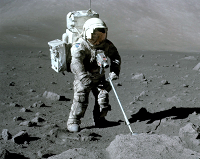
Schmitt collected numerous samples of lunar rock and dust, including a rock sample that has many in NASA convinced that the Moon once had an active magnetic field. The astronauts performed three EVAs in all. When it was time to leave, they reversed their order; thus, Cernan was the last to walk on the Moon. Their rendezvous with Evans in the Command Module proceeded without incident, as did the return to Earth. They splashed down on December 19. Schmitt was instrumental in documenting the geological results and implicants from the crew's forays on the lunar surface. 
One of the most famous photos of Earth ever taken is known as Blue Marble. Schmitt is believed to have taken the photo. Schmitt resigned from NASA in 1975 and ran for Congress. He won the 1976 Republican primary in New Mexico and then won the Senate seat by defeating two-term incumbent Joseph Montoya. He was not re-elected. During his term in office, he was the ranking Republican member of the Science, Technology, and Space Subcommittee. Entering the private sector, Schmitt has worked as a consultant in various areas, including business and geology. He has also served as adjunct professor of engineering physics at the University of Wisconsin-Madison, as chair of the NASA Advisory Council, and as chair and president of the Annapolis Center for Science-Based Public Policy. 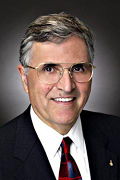
He wrote a book titled Return to the Moon: Exploration, Enterprise, and Energy in the Human Settlement of Space, which was published in 2006, and he has appeared in various television shows, mainly documentaries. He is married. His wife's name is Teresa. |
|
Social Studies for Kids
copyright 2002–2026
David White



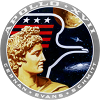 careful consideration did just that, bumping Joe Engle, who had been the Lunar Module Pilot. Commanding the crew was
careful consideration did just that, bumping Joe Engle, who had been the Lunar Module Pilot. Commanding the crew was 
